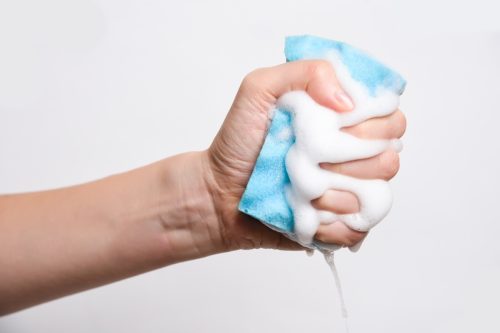5 Gross Kitchen Items You Should Be Replacing More Often

In order to keep a clean and sanitary kitchen, the Centers for Disease Control and Prevention offers three pieces of advice: Clean, sanitize, and disinfect. However, even if you are doing these three tasks regularly, there might be bacteria breeding in your kitchen in the places you least expect it, says Robin Murphy, cleaning expert and founder of residential cleaning service ChirpChirp. She reveals the top things in the kitchen you should be replacing more often, and a few of them might surprise you.

How often are you changing out your sponges? While they help you clean up, they might also be spreading germs. “Sponges are prone to bacteria growth, between their porous structure and frequent contact with contaminants,” says Murphy. She suggests replacing sponges every week “and definitely no less than every 2 weeks.”

Raw meat, vegetables, bread, and other random food items generally hit the cutting board at one time or another. And, according to Murphy, the knives you are using are creating nicks and grooves in them, “which become a breeding ground for bacteria. “The rule is to replace them at least annually,” she says.

Have you noticed that your ice is tasting a little funky? “Freezer smells are absorbed by the trays and transferred to the ice,” says Murphy. This can impact the taste of the ice, which depending on what you keep in your freezer, may end up a little less than thirst quenching.

Wooden spoons and other utensils are more porous than those made of other materials, so it’s important to replace them if they develop cracks or retain strong smells and stains that can’t be removed.
RELATED: 11 Easy Things You Can Do to Slow Down Aging

A lot of people dismiss the manufacturer’s recommendations of cleaning coffee machines regularly. However, if you fail to do so, you may be drinking more than ground up beans. “Calcium builds up and mold and yeast can grow in the water tank,” says Murphy. In addition to cleaning the outsides of your coffee maker and the basket, don’t neglect cleaning the water tank, something “people don’t typically clean enough,” she says.